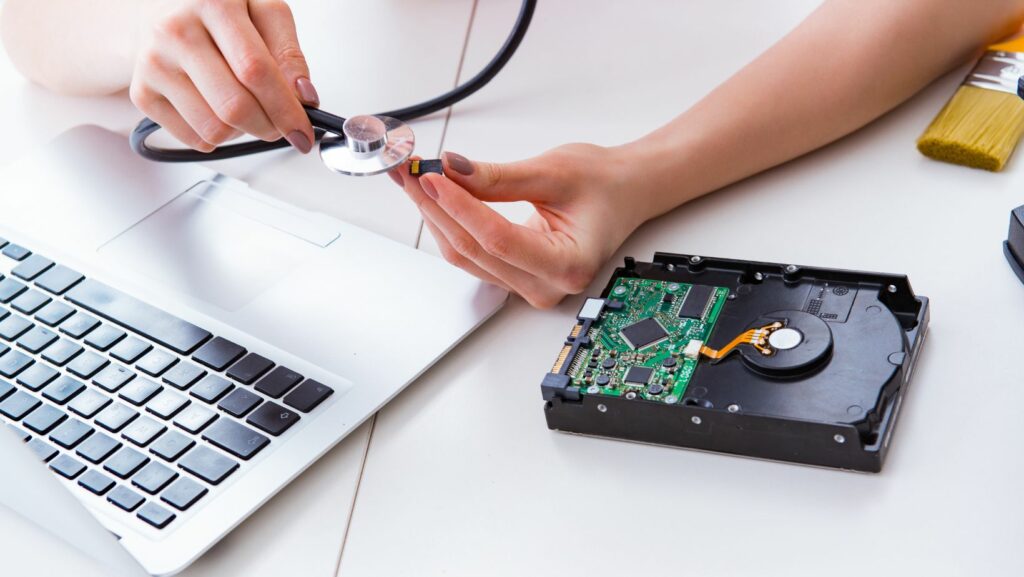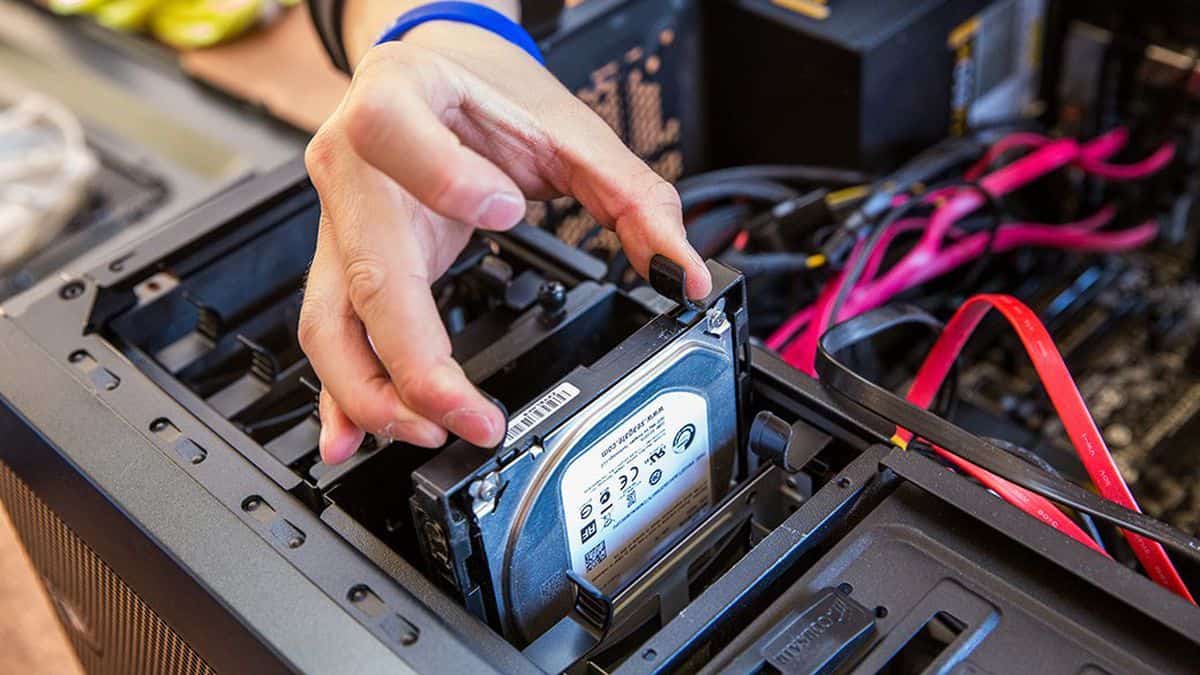If your PC hard drive is quickly filling up and you don’t want to delete your precious files, you may want to find extra storage for your precious files. One practical solution is to add a second internal hard drive. However, before you buy an extra hard drive for your computer, you should consider how many hard drives your PC can have.
A PC can have 4 to 6 hard drives depending on the number of SATA ports in your motherboard. A motherboard has 4 to 6 SATA ports, meaning you can connect up to 6 internal hard drives to the motherboard. To know how many hard drives your computer can support, open up your PC case and check the number of L-shaped SATA slots. You can also check your BIOS setup to see the number of SATA slots available in your PC.
How many hard drives can a PC have?
The number of hard drives your PC can support depends on the slots available in the PC’s motherboard. The motherboard has SATA ports where hard drives and DVD drives are connected. In modern computers, the motherboard can have 4 to 6 ports, which allows more than one hard drive to be installed.
If your PC has 6 SATA ports, and you have one DVD drive connected, it means that there are 5 ports available to connect up to 5 hard drives. However, even though you may have 5 ports available, you may not be able to use all 5 ports since there are other factors such as operating system, power supply, and space availability that determine how many hard drives your PC can have.
SATA is a port that connects the hard drive to the motherboard. These ports are available in laptops, desktops, servers, and gaming consoles.

How many hard drives can a laptop have?
Most standard-size laptops have one hard drive bay. If your laptop has one hard drive and an optical drive, and you need additional internal storage, you can replace the optical drive with a hard disk or an SSD.
Some recent laptop models now come with two hard drive bays, which allows users to upgrade the storage when the need arises. These models usually come with an HDD, and you can install an M.2 SSD in the additional storage bay. Using a laptop with both HDD and SSD will boost its performance, and make it fast.
Related: Is 250GB enough for a laptop?
How to check how many hard drives a PC can have
To check the number of hard drives your PC supports, open up the casing of your PC and examine the motherboard. On the motherboard, check for L-shaped SATA ports that are the same size as a USB port. Most motherboards have four to six SATA ports, but they can be lower if your PC is an old model.
You can also check the number of hard drives you can have in your PC by entering the BIOS setup, the main boot program for your PC. To access your PC’s BIOS, press the BIOS key (either F1, F2, F10, or F12 depending on the PC model) when the system is booting. If you are using Windows 10, you can open the BIOS setup through the advanced recovery setting.
How many hard drives can windows 10 support?
The maximum number of internal and external hard drives that Windows 10 can support is 26. Windows 10 allows up to 26 drives mapped to a drive letter. However, if you exhaust the 26-letter limit, you can map more logical drives or network drives to folders.
Practically, while windows 10 allows up to 26 drives to be mapped to its 26 drives, you can only have as many internal hard drives as your PC can hold. The PC power supply should also be sufficient to power all hard drives. Most desktops can hold a maximum of 10 internal hard drives.
How to install a hard drive to your PC
Once you have confirmed that your PC can have an extra internal hard drive, you must consider where you will mount it.
If your PC is a desktop, you should buy an internal desktop hard drive. The hard drive comes with installation brackets for easy installation. If you want to upgrade your laptop storage, you can install the hard drive in the additional hard drive bay (if your laptop has one), or in the optical drive.
Here are the steps to follow:
Step 1: Unplug from the power supply and unscrew the back casing
Disconnect the PC from the power source. Then, unscrew the rear case, and unplug the drive cables. The drive cables come in two sets i.e. data cable and power cable. Make sure to unplug both cables.
Step 2: Remove the DVD drive
Unscrew the DVD drive and slide out the drive from the laptop DVD drive. If you are using a desktop, you won’t need to remove the DVD drive if there is an extra compartment for the new hard drive.
Step 3: Mount the new HDD
Install the new hard drive mounting bracket and hold it into place using screws. Then, slide the new hard drive into the mounting bracket, and fix it into place with screws. Connect the new HDD to the motherboard, and plug in the data and power cables unplugged in step one. Screw the back casing, and connect to the power supply.
Step 4: BIOS Setup
Switch on the PC, and press the pre-set key to enter BIOS setup. The key can be F1, F2, F10, or F10 depending on the PC model. Once the BIOS setup has loaded, go to the Hardware tab to see all the hardware connected to the BIOS, and check the recently mounted hard drive. If the new hard drive is available, confirm the boot order, save the changes, and exit to restart the PC.
If the BIOS setup does not display the new hard drive, there could a problem with the cable connection, or the new hard disk may not have been screwed properly. Switch off the PC, disconnect from the power supply, and open the back casing to examine the motherboard connection, and confirm the data and power cable are connected properly. Repeat step 4 to confirm if the new hard drive is properly installed.
Format the new hard drive
Before the new HDD can be usable, you must format it into a readable file system. Format the HDD into NTFS if you want to use the new drive to store windows installation files, or FAT32 if you want to store data in the new drive.
FAQs
How many external hard drives can a PC have?
You can connect as many hard drives as the number of USB ports available on your PC. You can also use a power USB hub to connect multiple USB hard drives to your laptop.
How many SSDs can a PC have?
You can have as many SSDs as the SATA slots available. SSDs are connected to the same SATA slots that a regular HDD connects to the motherboard. However, using a USB hub reduces data transfer speeds since all the hard drives share the same port to transfer data.
Can I add 3 hard drives to my PC?
Yes, you can add three hard drives to your PC if your PC motherboard has at least three SATA ports and cables. Modern PCs have 4 to 6 SATA ports.

